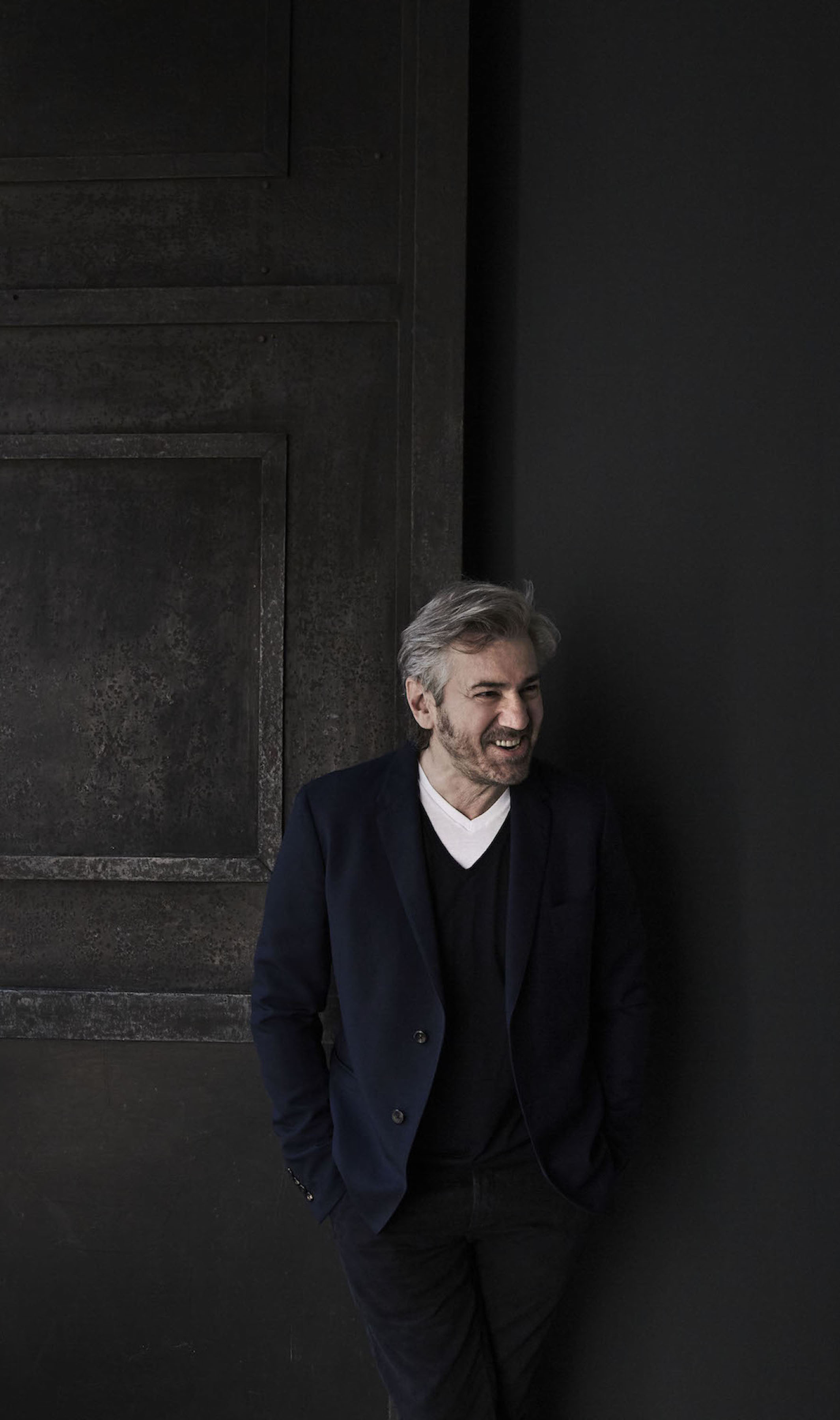Vincenzo De Cotiis is an architect and designer operating at a higher level of consciousness. And it shows. His interior design and collectible furniture range are meticulous, displaying his excruciating attention to detail as he draws inspiration from across the centuries and from unexpected materials. Perhaps his style may appear as cold or even brutal at first look, but with a deeper understanding of the process and materials used, they become rich and complex in meaning as the viewer uncovers the layers and layers of thought, intentions, and connections behind them.
Here, LARRY’S LIST discusses with Vincenzo his obsession for collecting objects and materials to incorporate into his designs, how his Italian heritage influences him, what to expect from his upcoming projects as well as his sources of inspiration.
11 Questions with Vincenzo De Cotiis
What is your number-one rule when designing a space to best compliment an art collection?
True beauty is found precisely in the things that remain hidden, in those that are resoundingly less important.
I always feel the need to create vistas or glimpses of something that is rather undefined or unfinished, while at the same time maintaining a great deal of attention to detail and well-defined finishing touches.
Years ago, I found old, perforated cards for an organ, without knowing exactly what I was going to do with them. Glorifying and ennobling materials and objects that are seemingly humble through a transformation of perception led me to make these cards a bona fide work of art.
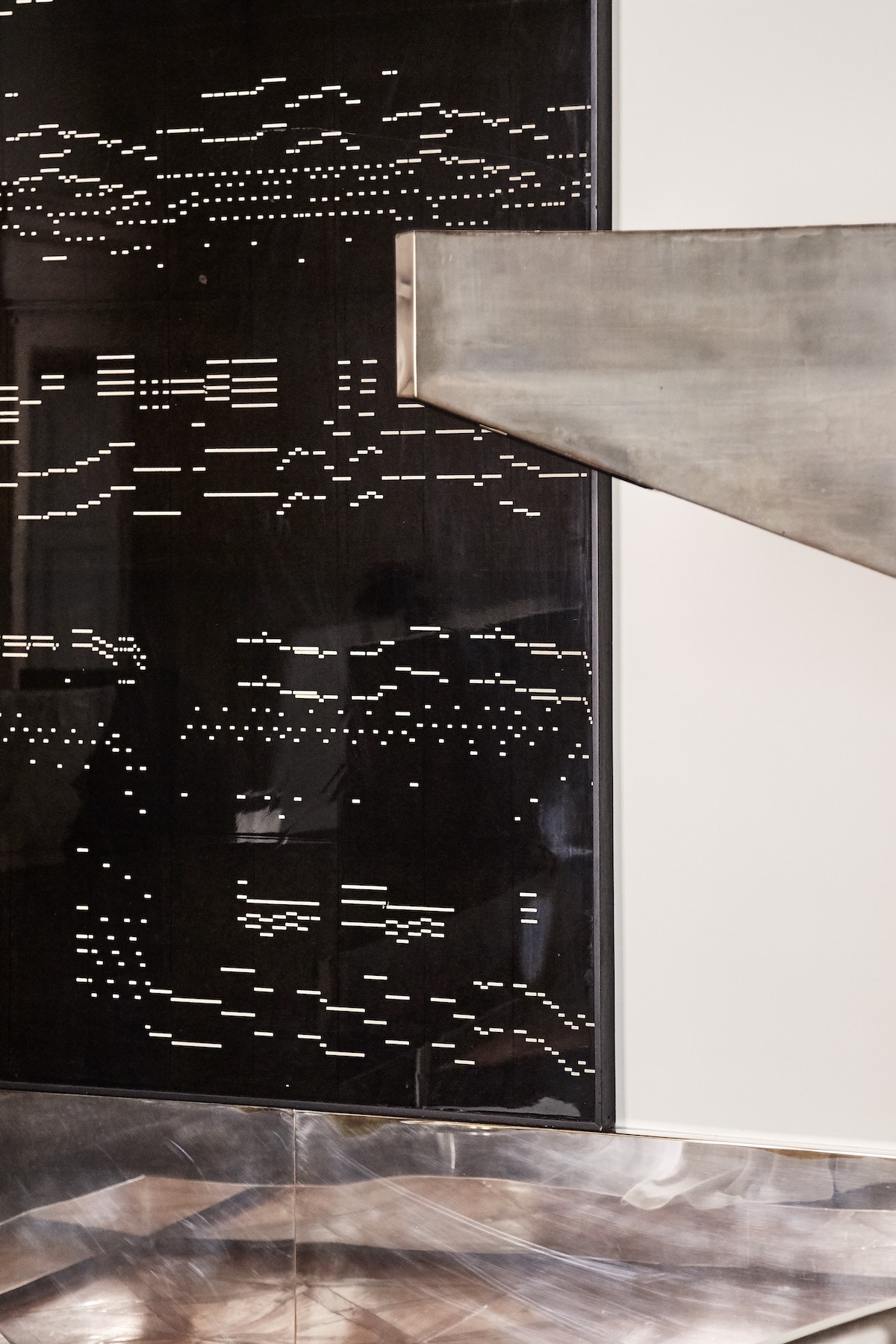
The materials speak to me as I collect them. The re-manipulation of matter is an integral part of my creative process. I go on long hunts to find formulations suited to each work and often it is the material itself that shows me the way to shape the formal aspect. I collect materials that inspire me. For example, unused fiberglass from boat factories — I have used it to create sculptures.
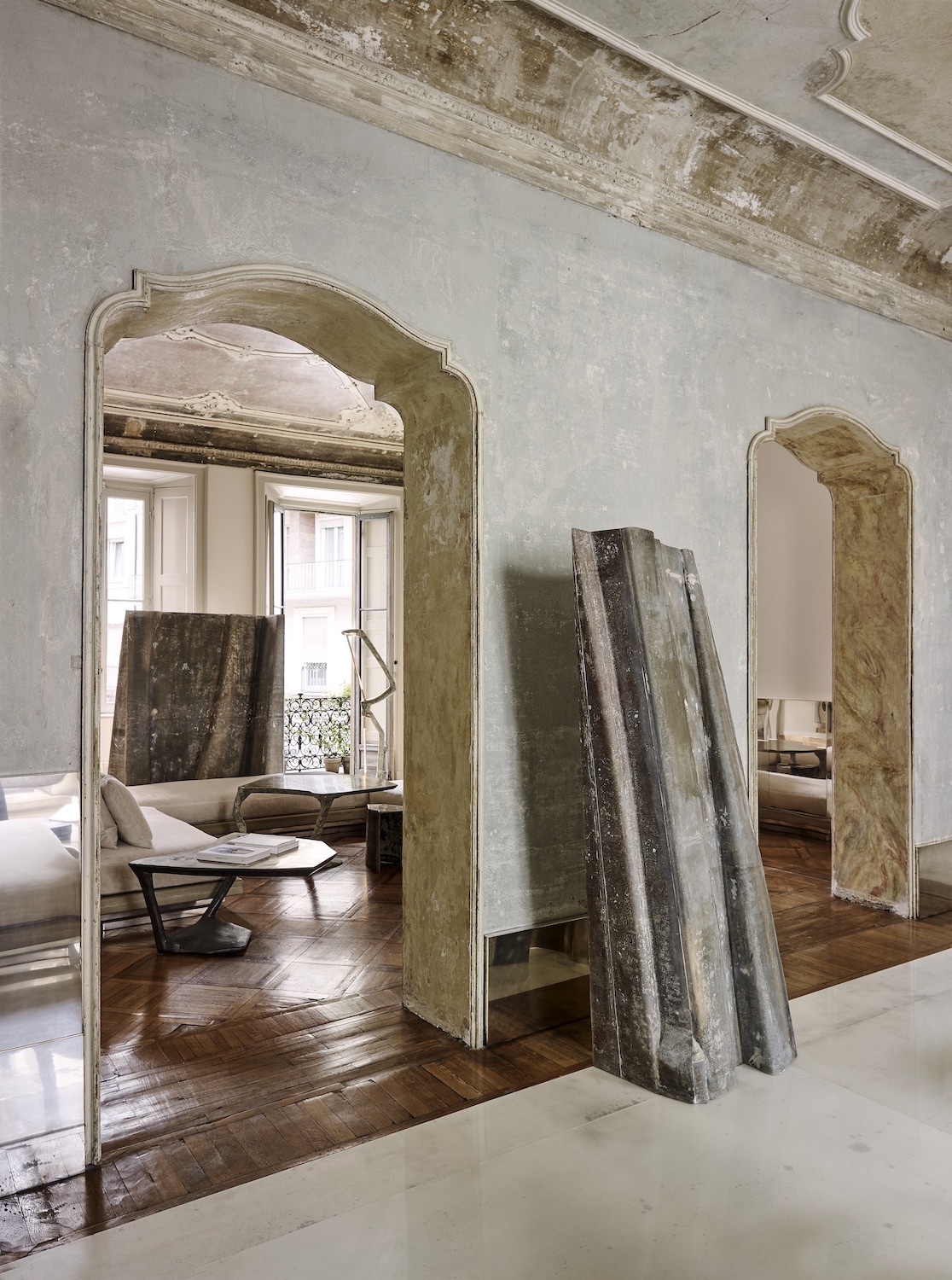
Would you share some of your personal favourite artists that you love to see featured in interior design?
Isamu Noguchi, El Anatsui, Rachel Whiteread, Barbara Hepworth, and Ibrahim Mahama.
You are a collector yourself, albeit in a minimalist fashion. Who are some of the artists you collect? Which pieces are closest to your heart?
Michail Pirgelis, Florian Baudrexel, Felix Schramm, and Alex Foxton.
Interiors and art often seem to be in flawless harmony. Yet, we know from our collectors that artworks eventually change. Does this mean that the interiors have to change too?
Our house is subject to ceaseless change. The objects I collect and reinterpret enter into an empathetic or conflicting relationship with those pre-existing in the house. In both cases, the result is always a surprise, simultaneously within and outside of time.
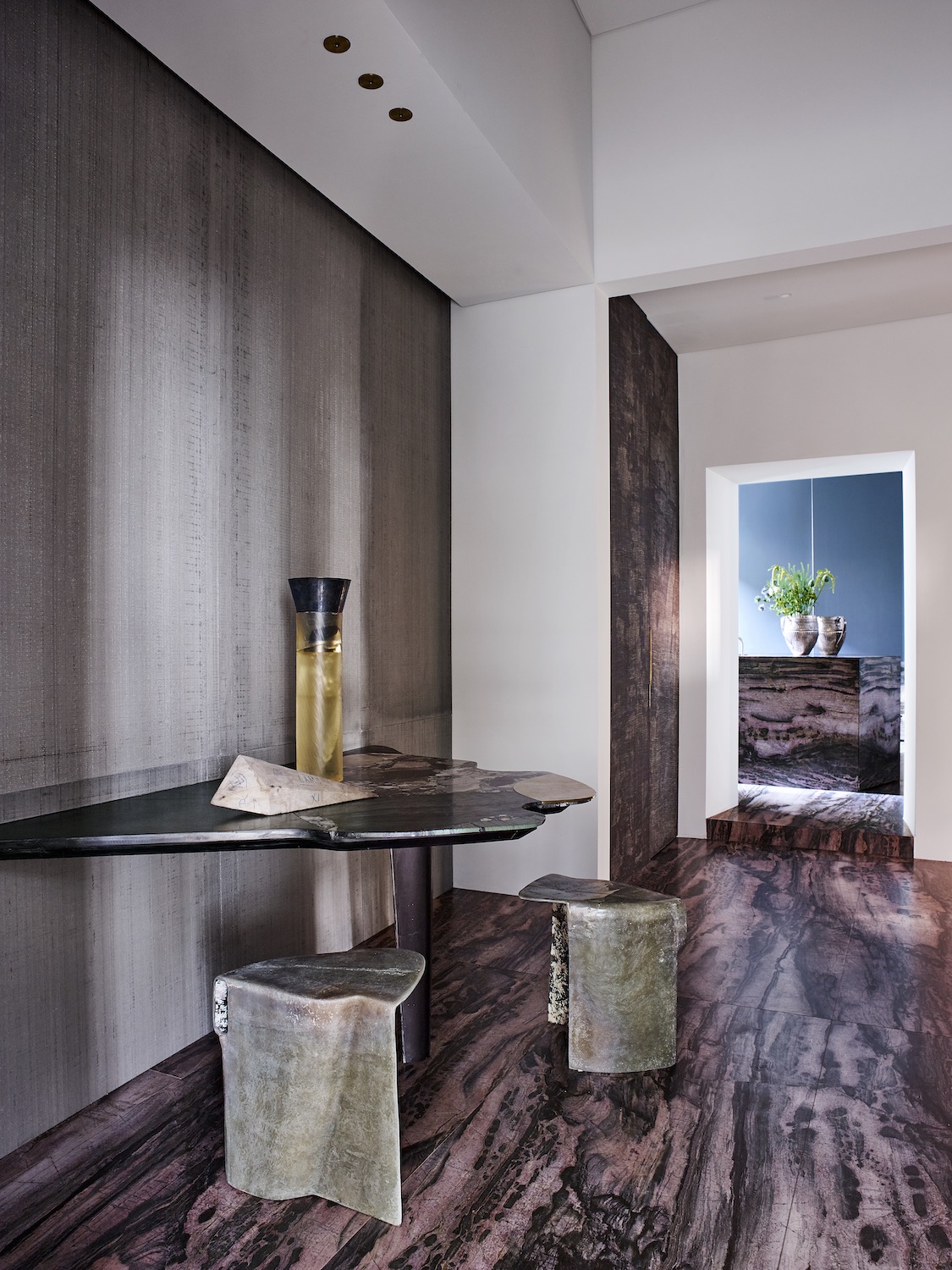
Your signature style is minimalist, almost brutally so. How do you balance your own preferences with those of your clients who may have extensive art and design collections that they wish to display in their homes?
It’s always a process, hours of conversation and many compromises. I’m very lucky because my clients trust me, so it’s easy to choose the right pieces for each project.
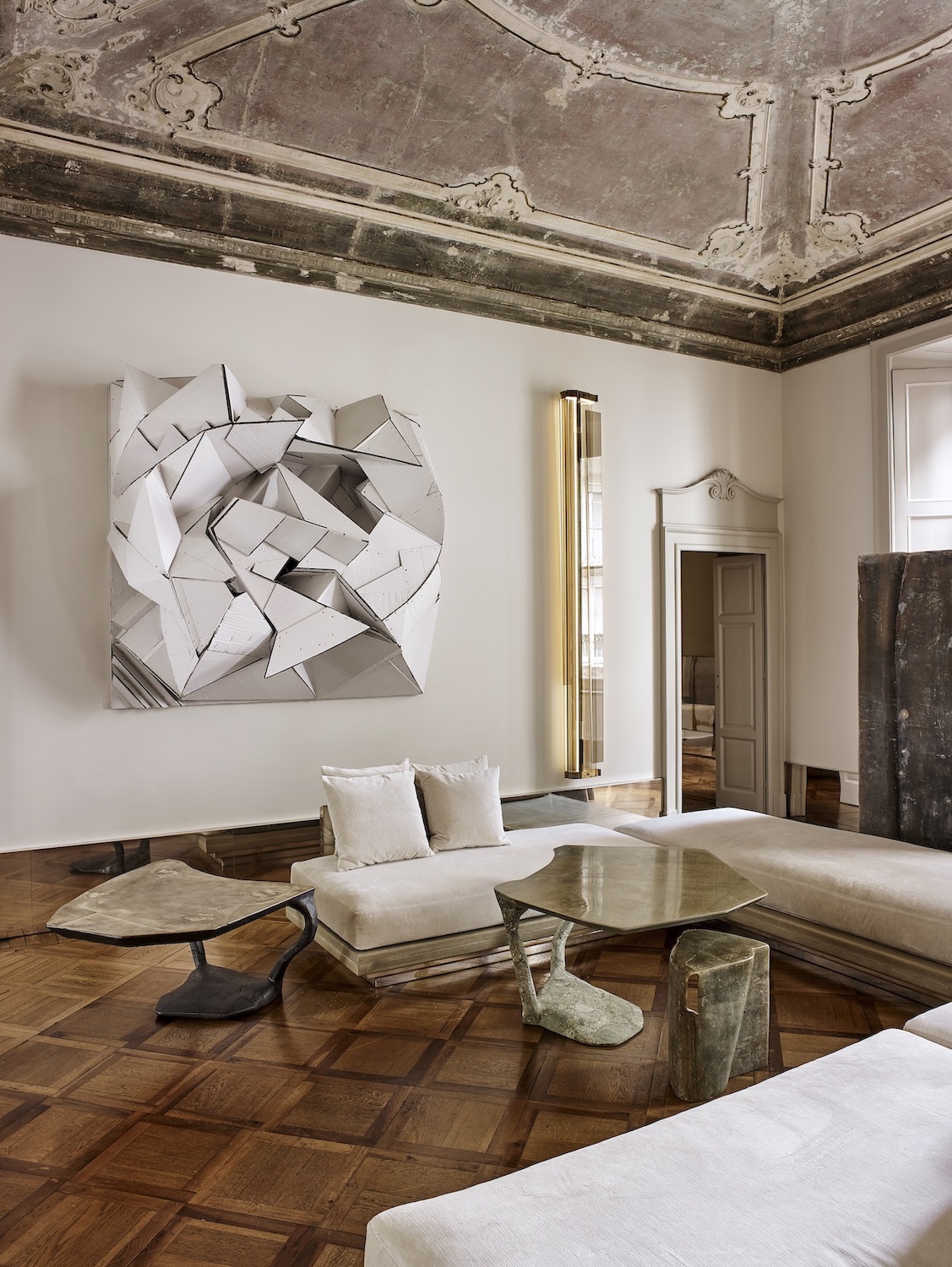
Moreover, you have admitted yourself that it is “not so easy” to live in your designs. Where do you draw the line between form and function? How much should a space be about looking perfect for that “Instagram moment” versus accommodating the needs of daily living?
I’m not interested in “Instagram moments,” but rather in artistic and sculptural ideas.
Every gesture is an artistic gesture if dictated by a free expression. In my case, the expression is the result of intellectual and instinctive, sometimes very long, sedimentation. Surely, I do not deal with product design in the shared sense of the term, but many of my pieces also have function and are comfortable.
Alongside interiors, you also design furniture and objects using references from Italy’s rich design past to create futuristic pieces. Can you tell us about your relationship with historical Italian design?
I believe I am a deeply classical man, perhaps because of my education, in a broader interpretation of term. Belonging to a certain Italian spirit is, I believe, evident in everything I create. Therefore, it’s impossible for me not to acknowledge what is already there, what is pre-existing to any intervention, the wealth and charm, while at the same time, a kind of imposition. The stratification of time and life, which is deposited in spaces, on objects, is an source of stimulus and simultaneously of reverence. My projects are almost always born from interaction between the contemporary and the existing, and the final outcome is often unpredictable given the complex nature of the various parties involved.
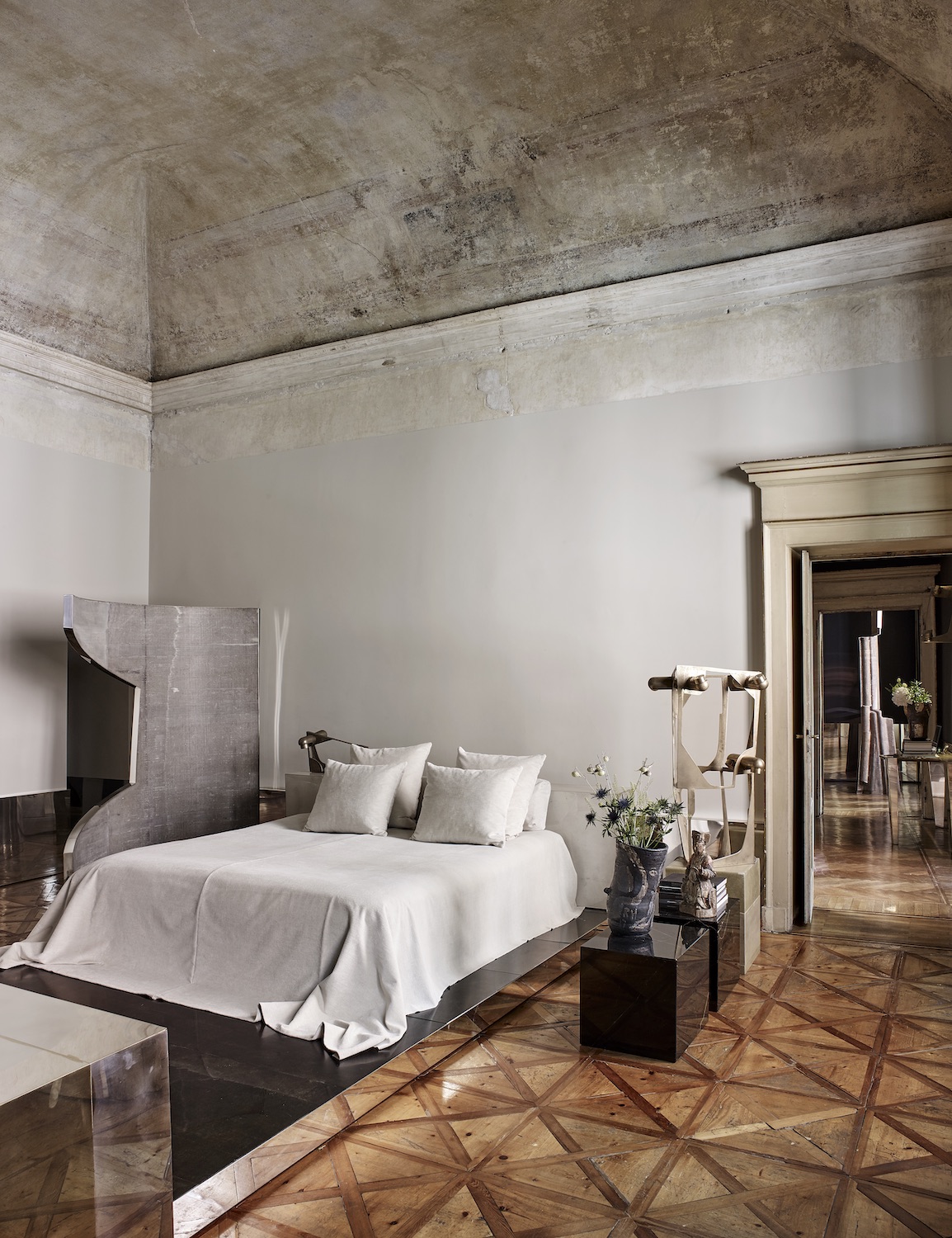
What advice would you give to a young designer in finding their own unique perspective in interior or furniture design? Or even to a young collector looking to create a minimalist space at home?
Technology has changed our objectives and methods, especially for young interior designers, but I believe that every design and creative approach should always be linked to experimentation, craftsmanship, and even closer to art.
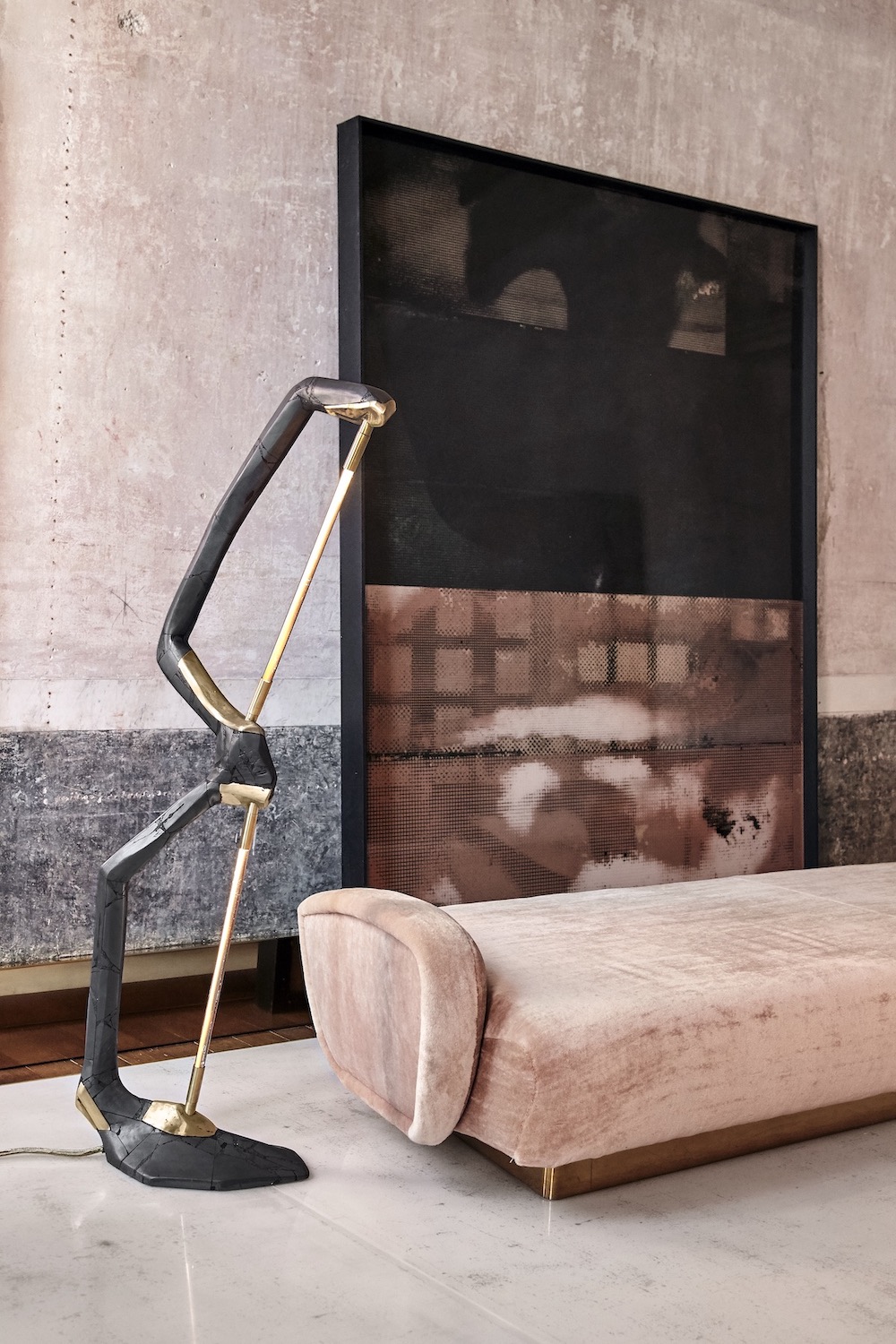
As a tastemaker, are there any trends from your perspective you could share with us?
I think I can say that my language is changeable, in constant movement and adaptation. It is constantly fed and imbued with innumerable stimuli that come from many different sources: art, literature, landscape, and relationships, to name just a few. Then, there are the “constant” elements that can be identified or recognized over the years: affection for salvaging materials and for the matter itself, the attempt to bring together apparently ‘distant’ and very different materials, incessant formal research that often draws from the natural world, the experimentation of techniques not always belonging to the world of art.
What can we expect to see in your future projects?
My work will always be an evolution of my experimentation with materials. I would like to explore some new ideas and to work with recycled materials.
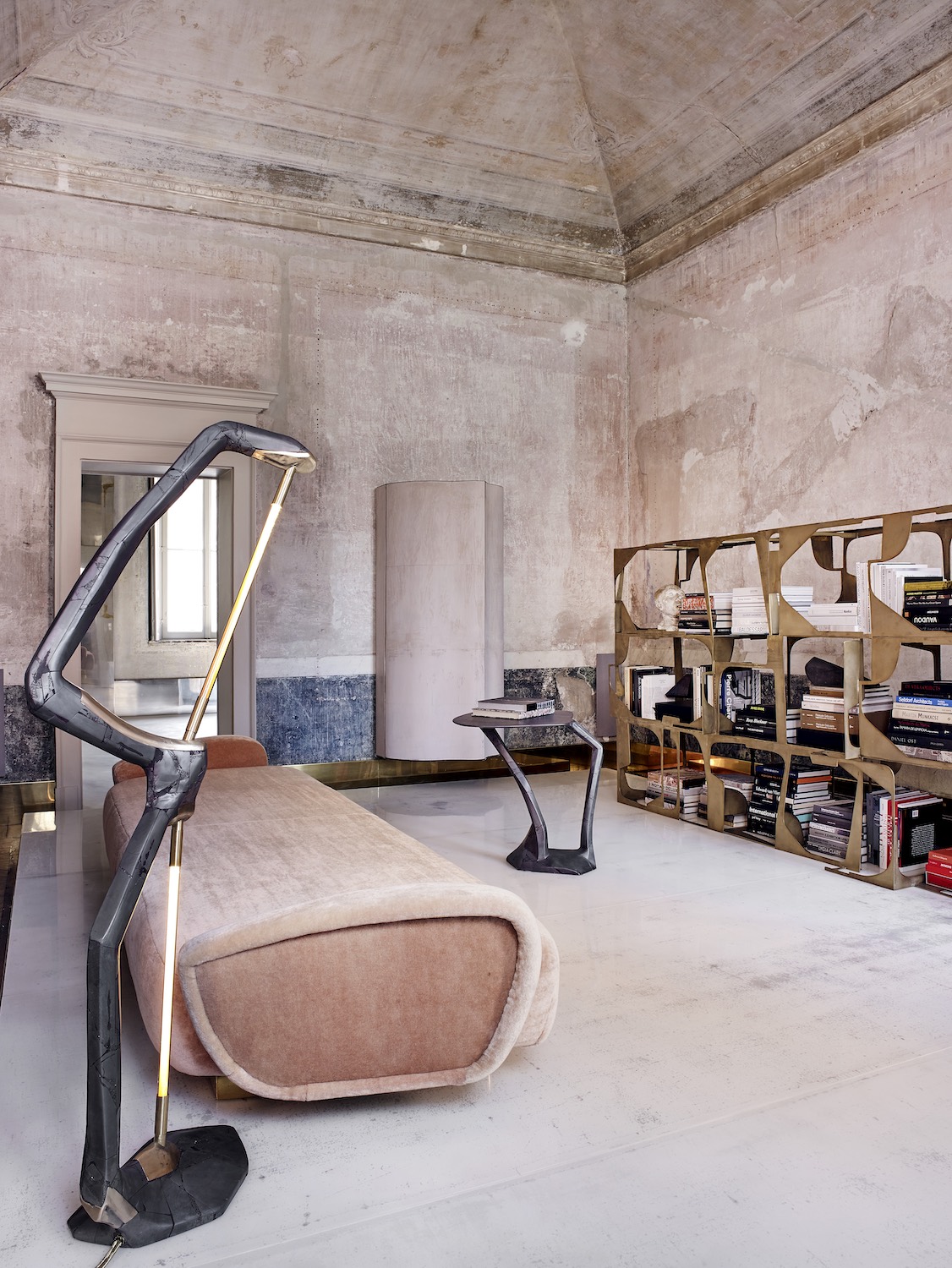
Can you share 5 of your most inspirational IG accounts?
@work2day
@slow_roads
@natgeo
@whitecube
@carpentersworkshopgallery
All photographs by Joachim Wichmann, courtesy of Vincenzo De Cotiis Architects and Gallery.
Related: VINCENZO DE COTIIS
Instagram: @vdecotiis
A selection of artists and designers featured in Vincenzo’s designs and collection:
El Anatsui
Florian Baudrexel
Alex Foxton
Barbara Hepworth
Ibrahim Mahama
Isamu Noguchi
Michail Pirgelis
Felix Schramm
Rachel Whiteread
Current exhibition that Vincenzo participates in: INSIDE LE PURISME, 6 Sep – 17 Dec 2021, De Cotiis Gallery, Via Carlo de Cristoforis, 14, 20124 Milano MI, Italy
By Jamie Bennett





